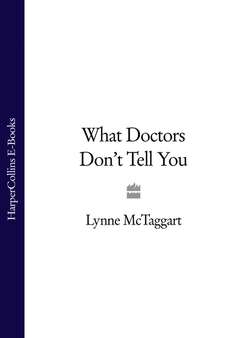Читать книгу What Doctors Don’t Tell You - Lynne McTaggart, Lynne McTaggart - Страница 23
‘OSCOPY’ TESTS
ОглавлениеMost other tests you’re likely to encounter are more invasive, requiring that your doctor inject or penetrate your body with something. These can include ‘oscopy’ tests, where an optic tube or ‘scope’ is passed through a bodily orifice in order to inspect the inside of the appropriate body cavity – the stomach (endoscopy), abdomen and pelvis (laparoscopy), lungs (bronchoscopy), colon (colonoscopy), cervix (colposcopy), rectum and lower colon (flexible sigmoidoscopy, or even the knee joint (arthroscopy).
Although doctors consider the common endoscopy routine, there are enormous risks, including perforation of the wall of the oesophagus, stomach or duodenum (the small intestine), infections and adverse reactions to anaesthetic – even death. Up to one in 36 patients ends up with a perforation, and nearly one in 100 patients will suffer one so serious that it proves fatal.126 Overall, it’s estimated that endoscopy is killing one in 2,000 patients. This poor batting average only came to light because a special audit of UK hospitals was carried out to look into the long-term effects of the technique.127 The study discovered that patients were dying up to 30 days after having the test, usually from heart or respiratory complications. Complications are occurring because the test requires the patient to be sedated, which means the patient can still respond but cannot feel any pain. Nevertheless, sedated patients must be carefully monitored; inadequate monitoring is the cause of 20 per cent of all deaths related to anaesthesia.
Another recurrent problem with ‘oscopy’ tests, such as endoscopes and bronchoscopes, are outbreaks of infection occurring in American hospitals caused by inadequately sterilized flexible fibre-optic endoscopes and bronchoscopes. According to the US Food and Drug Administration, up to one-quarter of all endoscopes, even those that are sterilized, contain 100,000 or more different types of bacteria, a fertile ground for cross-contamination. Although there are no known cases of HIV infection due to endoscopy, there is evidence of the transmission of hepatitis B and C, and Creutzfeldt-Jakob disease.128
The devices are cleaned and disinfected either manually, which is time-consuming for a busy hospital, or, increasingly, by automated machines. After investigating an outbreak of Pseudomonas aeruginosa, causing infection of the gall bladder, which occurred in one American hospital, the American Centers for Disease Control and Prevention found the culprit to be a thick film of P.aeruginosa which had formed in the detergent-holding tank, water hose and air vents of the automated disinfecting machine. Attempts to disinfect the machine according to the manufacturer’s instructions using commercial preparations of glutaraldehyde were unsuccessful.
After the second outbreak, the American Food and Drug Administration (FDA) requested that one of the manufacturers send out a safety alert to all hospitals with its products, recommending that a stringent rinsing programme be adopted for the cleaning of the machines. The FDA has also suspended the further sale of any of the machines until the contamination problem is resolved. In the meantime, even disinfectant has caused side-effects such as bloody diarrhoea among patients and hospital staff alike.129
As for laparoscopy, three out of every 1,000 of these procedures cause complications, and even death. Between 1995 and 1997, more than 500 patients suffered nearly 600 injuries, and 65 died.130 A goodly number have to do with doctors being unable to use the equipment properly. In a survey of gynaecologists, one in every 25 had injured a major vessel during laparoscopy at some point in their career.131
One of the main culprits is the common use of the trocar (a sharp implement which withdraws fluids by puncturing the abdominal wall), which frequently injures major blood vessels and major organs, sometimes causing death due to vascular injuries.132
Arthroscopy, another ‘oscopy’ used to examine the knee, can cause deep vein thrombosis. Nearly a fifth of patients undergoing the procedure develop the condition.133
